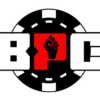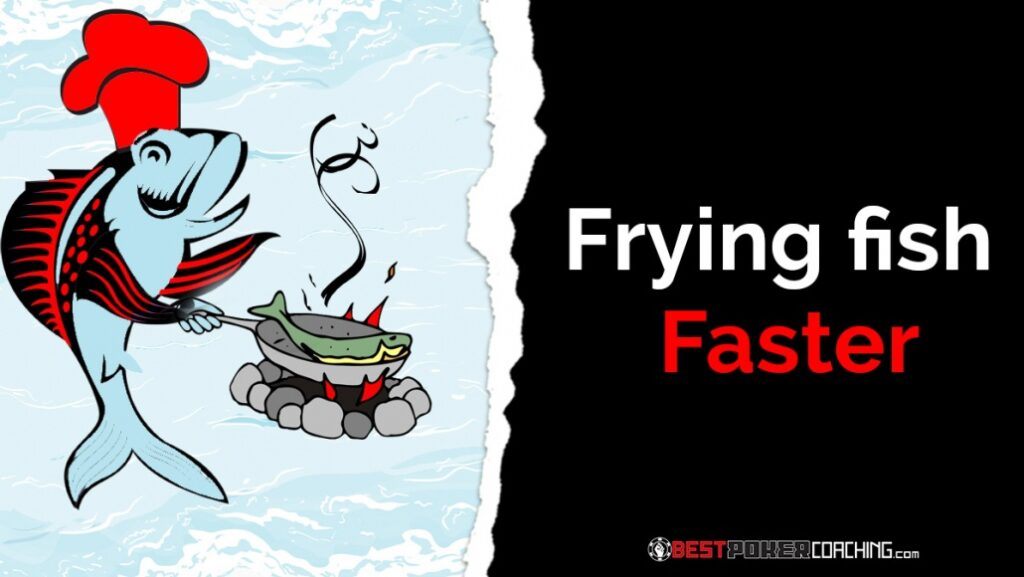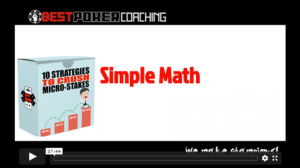We’d all love to think of ourselves as the best reg at our respective limits. Perhaps we are working on our game every day, progressing closer to such a goal.
It’s important however, to retain a healthy idea regarding where our winrate actually comes from. Losing sight of this important concept can easily destroy our profits.
In every game, the majority of our profits come from the weaker players.
It’s easy to become distracted from the importance of this. We could find ourselves spending a lot of time battling it out in tough lineups against regs where our edge is very small. Sure, this helps us to become the best reg in our games, but when we stop to analyse things, this is not usually the goal that we should be pursuing. Most professional poker players actually have the following goal –
Make the most amount of money in the shortest amount of time.
Sometimes our ego can get in the way of this. Here are a few examples.
1. We sit at a reg infested table even though there are much softer tables available in the lobby. We know we are better than the other regs and we want to stay and prove it. This could also apply to playing at tough networks when there are softer games available elsewhere. Our ego might make us feel good in the short-term, but it’s going to eat into our hourly rate.
2. We refuse to add additional tables because we want to maximise our winrate. While adding extra tables might reduce our winrate slightly, it could easily improve our overall hourly rate. Sometimes players would rather maximise their winrate than their hourly so they can feel good about themselves. Serious professionals only care about their hourly rate.
3. We refuse to move up limits even though BRM suggests it’s a good idea. We want to stay at our current limit until we have achieved a high winrate over a big sample. This is sometimes ego related and sometimes mindset related. It doesn’t matter if winrate is low at the next limit up – if our hourly increases, that’s all we care about.
It is going to take a measure of humility to play in a way that maximises our hourly rate as opposed to maximising our ego. The first step is to acknowledge that we should be hunting down recreational players and playing as many pots against them as possible. Here we will recap on some of the most important techniques for doing so.

Identifying Recreational Players
The first step is to identify recreational players at our tables. Look for the following –
– Open limping preflop
– Effective stack less than 100bb (not auto-rebuying)
– Unorthodox bet-sizings preflop/postflop
– Unusual hands at showdown (bluffing too aggressively, calling too wide etc)
– Unusual VPIP/PFR (after gathering a sample)
– Typing in the chat box (Regs rarely do this)
– Any other clues from location, screenname, avatar etc etc
The most important in the list are the top 3, because these allow us to identify recreational players without needing any type of sample. In most cases, if we are waiting until we have a big sample size on our opponents before labelling them as fish, our observational skills are lacking.
Number three on the list “unorthodox bet-sizings” requires the most skill, because it requires a knowledge of standard bet-sizings in every spot. A common example might be a player who makes a 2/3rds pot cbet in a 4bet pot, when 1/3rd pot would usually be considered standard. To the untrained eye this might seem somewhat subtle, but it helps us to distinguish between decent opponents and weak regs on the fly. Remember, just because someone always auto-rebuys and never open-limps, doesn’t mean they are not a fish.
Isolation Techniques
Probably you figured we were going to discuss iso-raising? Well, we aren’t. Hopefully we are already aware that iso-raising against limpers is an absolute crucial technique in maximizing the amount of volume we play against weaker players.
So there are ways to increase our volume against recreational players aside from iso-raising? Absolutely! Let’s list the main techniques.
1. Iso-3betting – This is like iso-raising, but 3betting. This is especially useful when there are still players left to act behind us. Cold-calling vs a recreational player in MP/CO can sometimes be unattractive due to the possibility of facing overcalls and squeezes. By 3betting ourselves, we can often shut down action behind us and isolate the pot heads up against the weaker player.
It shouldn’t come as a big surprise that a lot of recreational players fold < 50% of the time when facing a 3bet. Iso-3betting hence requires us to use a depolarized range. Iso-3betting speculative holdings such as suited-connectors doesn’t make a lot of sense unless we have a specific read.
2. SB Completing (HU) – It might surprise us to find out that the SB is one of the most important positions in maximizing volume against recreational players.
The first area of interest occurs when the action is unopened and we are in the SB, facing a BB fish. This is clearly a spot where we want to play more hands than normal just based on the fact that our opponent will be making a lot of mistakes postflop.
Could we open-raise 100% of hands? Quite possibly, it depends on how bad our opponent is. Having said that, there is another option which is potentially more attractive. After all, why open-raise 85o if our opponent is not really folding much preflop?
It’s recommended that we play in the region of 70-100% of holdings when there is a fish in the BB. Our best hands can raise, while our weaker holdings can complete in the SB, looking to see a cheap flop with good implied-odds.
3. SB Completing (Multiway) – SB completing is also important if there is a limper before us. Imagine for example we are in the SB with 78o and the BTN open-limps. Could we iso-raise? That’s pretty questionable, the hand is simply not strong enough to iso-raise OOP.
Folding is too tight, however. We get an excellent price preflop, and the opportunity to play against a recreational player postflop. It’s recommended that we should be playing around 70% of hands in this spot (our best hands being iso-raised).
4. Opening Wider (especially BTN) – Imagine two calling stations in the blinds when we are first to act on the BTN. Many players get confused by this situation and think that they should be “opening tighter because there is no fold-equity”.
The reality is the opposite, we want to be playing as many hands as possible in this spot. Bad players in the blinds is a reason to play more hands not fewer hands. We could consider opening 70% range or more, coming in for a min-raise.
We can also open-raise wider from other positions although the effect will be a lot less dramatic than on the BTN. For example, we can only increase our UTG open-raise frequency by a few percents, since we have to take into account the other players who get to act behind us also.
5. Cold Calling Wider (Especially SB) – Ordinarily we cold-call a very tight range from the SB and for good reason. Calling too frequently sets us up for being squeezed relentless by the BB.
What if BB is a passive fish who rarely squeezes and overcalls way too often? Developing a wide cold-calling range starts to become logical. Some of the hands that we’d typically 3bet can now get mixed into our cold-calling range with a high frequency. Note that suited or connected cards are best of this, due to their excellent multi-way playability. Offsuit broadways may still play better as 3bets etc.
The first image is standard defending range from the SB vs a 2.5x BTN open, (pink is 3bet, blue is cold-call). Notice how the defending strategy is shifted towards cold-calling in the second image where BB is a weak player. The overall defending frequency is roughly the same, but can potentially be expanded further in the second image.
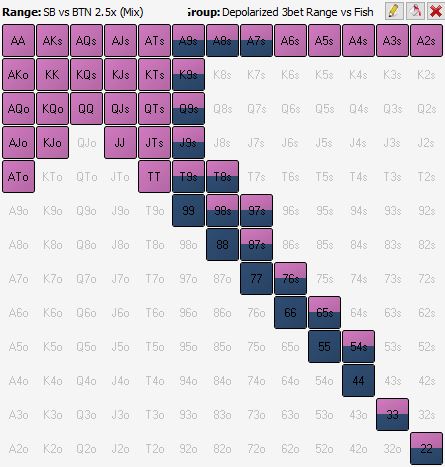
And now with a donk in the BB…..
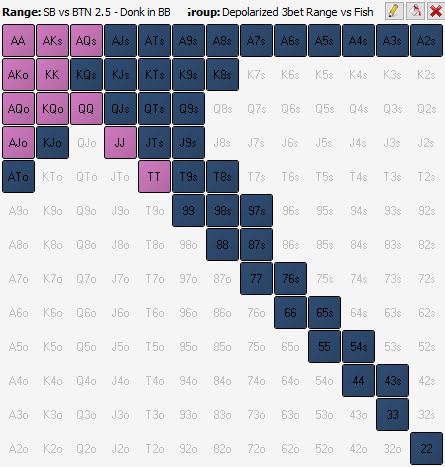
Our cold-calling range can be expanded from other positions also if either a) there is a fish behind us or b) the open-raiser is a fish.
Postflop Adjustments
It’s not uncommon to hear poker players claim that they “do ok against the regs” but sometimes feel “completely lost against the fish”. The simple fact is that recreational players can always show up with a wider range than regs can. There is always that higher percentage chance that a recreational player is doing something completely random.
There are two key adjustments to make when playing against recreational players postflop.
1. Avoid making big laydowns or hero folds. We should be reluctant to fold all hands above a certain strength. For example, it’s not a great idea to fold overpairs in 3bet pots vs recreational players (100bb effective). They could literally be overplaying top-pair-weak-kicker.
2. Value-bet larger and thinner. It’s no secret that one differentiating factor between a regular and a recreational is that the recreational player is going to have trouble folding when he should be. We can exploit this by using larger value-bet sizings and value-betting a thinner range than we would use against regulars.
As Raskolnikov loves to point out, you don’t see lions eating lions on the discovery channel, do you? Let’s go hunt some gazelle!

